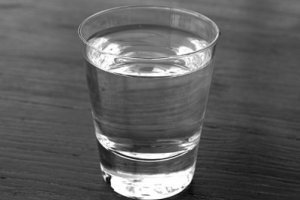Rainwater often passes through the ground, reaching very deep layers. In these cases, while crossing, it usually comes into contact with mineral substances that are found there, and that become part of its composition. Thus, mineral water is formed.
Mineral water, then, can be removed through natural sources or artificially, through artesian wells. As this water has minerals in its composition, it can have a drug action, that is, it can prevent or help in the treatment of diseases.

Mineral water spring.
The medicinal action of water can be used when it is ingested (ie: when drinking water); or even in medicinal baths.
Some mineral waters are dark. Others smell, and even taste. Such properties are related to minerals found in this water. Thus, not all mineral water has the characteristics of drinking water, which is one that has no smell (odorless); has no color (colorless) and has no taste (insipid).

Not all mineral water is drinkable.
Drinking water can usually be ingested. Thus, mineral water that has the characteristics of drinking water, may also possibly be ingested.
Like there is a risk of these waters being contaminated by microorganisms that can cause health problems, such as diarrhea and vomiting; is important drink only that mineral water from reliable brands that you already know. Another option is always to opt for water that has undergone chlorine treatment and/or that has been filtered, or for water that has been boiled.

Mineral water, in some situations, can be ingested.
In many homes, the water that comes out of the tap is already treated and can be drunk. However, as it sometimes still smells and tastes like chlorine, it's best to filter it first.
By Mariana Araguaia
Biologist, specialist in Environmental Education


